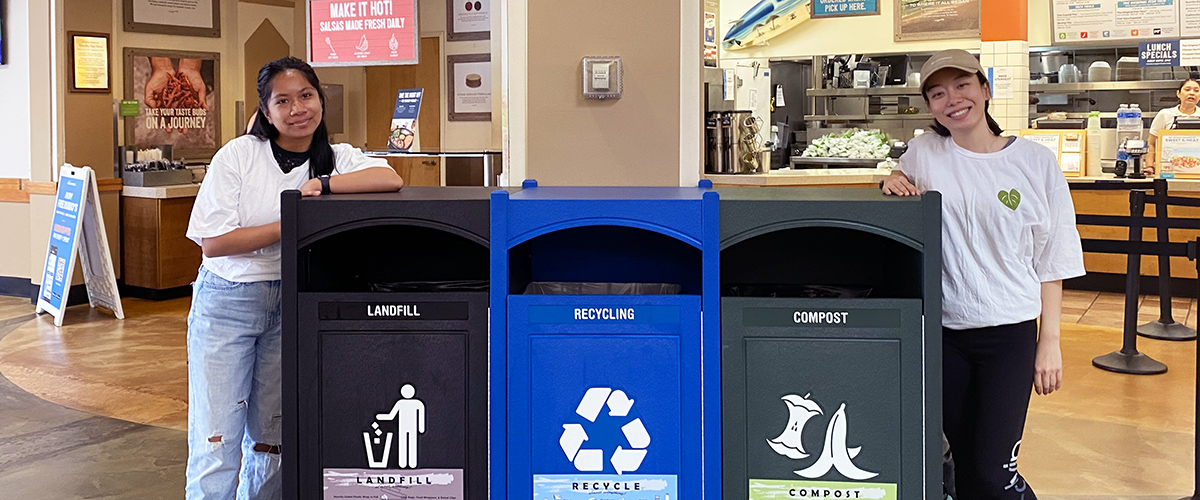Energy
Building energy use is responsible for nearly all of the campus’ operational greenhouse gas emissions (scopes 1 and 2). Energy is used in a variety of ways on campus, including lighting buildings and exteriors, heating and cooling spaces, and powering computers, lab equipment, and plug loads.
SDSU has implemented an energy information system, allowing us to do advanced analysis of energy use, automate processes, and provide dashboards. These dashboards will display high level and detailed information on energy, water, and recycling data for anyone on campus to view to enable better analysis of energy-savings opportunities and automating invoicing. You may have seen the energy dashboards around campus that are available for the Student Union, Storm-Nasatir, and EIS.
Energy Sources
The cogeneration plant provides most of the campus electricity and steam. We simultaneously produce electricity while recovering and utilizing the heat produced. The plant burns natural gas to drive turbines, which generate electricity and waste heat. This waste heat is then used to drive another turbine that generates electricity and supplies heat to campus. The remaining energy needs for campus are met by procuring it through the electric grid. This grid energy is some of the cleanest available because of the amount of solar and wind produced on it. To achieve carbon neutrality, the natural gas-driven cogeneration plant would require carbon offsets or biogas, which are in short supply and are expensive. SDSU is in the process of moving away from using the cogeneration plant and converting from steam to hot water with distributed natural gas boilers across campus. We will procure electricity from the grid, which will reduce carbon emissions. SDSU also is analyzing electric heat recovery chillers, solar photovoltaics, and energy storage to further reduce our carbon emissions.
SDSU has 2.3 MW of on-site solar photovoltaics across all campuses (main, Mission Valley and Imperial). The main campus has space for approximately 4 MW more of solar arrays. A study is underway reviewing the feasibility of installing solar at the main campus along with the Imperial Valley campuses.
Energy Efficiency
All roadway, parking lot, and parking structure roof lighting has been converted to LED lighting to last up to 50x longer than traditional lighting and saving loads of energy. These lights are controlled through a central system and by occupancy sensors to brighten when areas are active.
This program allows the room reservation system to communicate to the Building Automation System (BAS) controlling heating and cooling units to turn-on before a room is occupied and to turn-off afterwards, saving energy and providing increased thermal comfort.
This is a process that involves improving buildings efficiency through updating its systems/equipment. This process can cut energy use per building by 20 to 40%.
For example, retro-commissioning Arts & Letters cut energy use by over 35%. Other projects currently underway include CSL, GMCS, Fowler, and Peterson. These are funded by a revolving loan fund where energy savings go back into the fund to support more projects.
Building controls are being converted from an older pneumatic system to digital, which improves comfort and equipment control. Hardy Tower is the most recent building to receive a building controls upgrade.
The campus energy information system tracks all energy and sustainability data to analyze and present. This includes advanced fault detection which automatically identifies energy savings opportunities in ten buildings.
Take Charge
You can help campus cut energy use by turning off lights and equipment when not in use, purchasing energy efficient and ENERGY STAR qualified equipment, and maintaining space temperatures of 68 to 70 °F for heating and 74 to 78 °F for cooling.
If you see energy waste or have ideas, please Contact Us!
See GOCP for more information.
Habits: wash clothes with cold water, hang to dry, shade your windows, unplug when not in use or use power strips, run dishwasher/washer machine only when completely full.
Upgrades: Replace all your lights with LED ones, get rechargeable batteries, upgrade to energy-efficient appliances, always check for leaks and seal openings around the house, replace/clean furnace filters.
Green Certify Your Office or Lab with OES!
OES offers Green Certification programs for both labs and office spaces. Being Green Certified means your office and lab conserves energy and water, reduces waste, recycles materials, and other sustainable practices!


